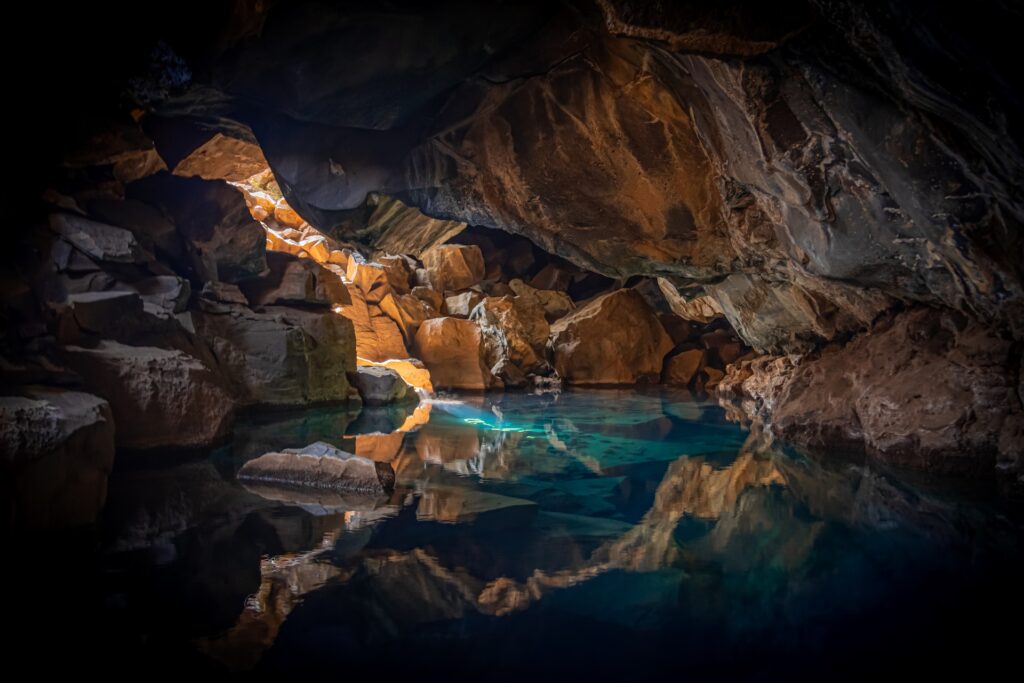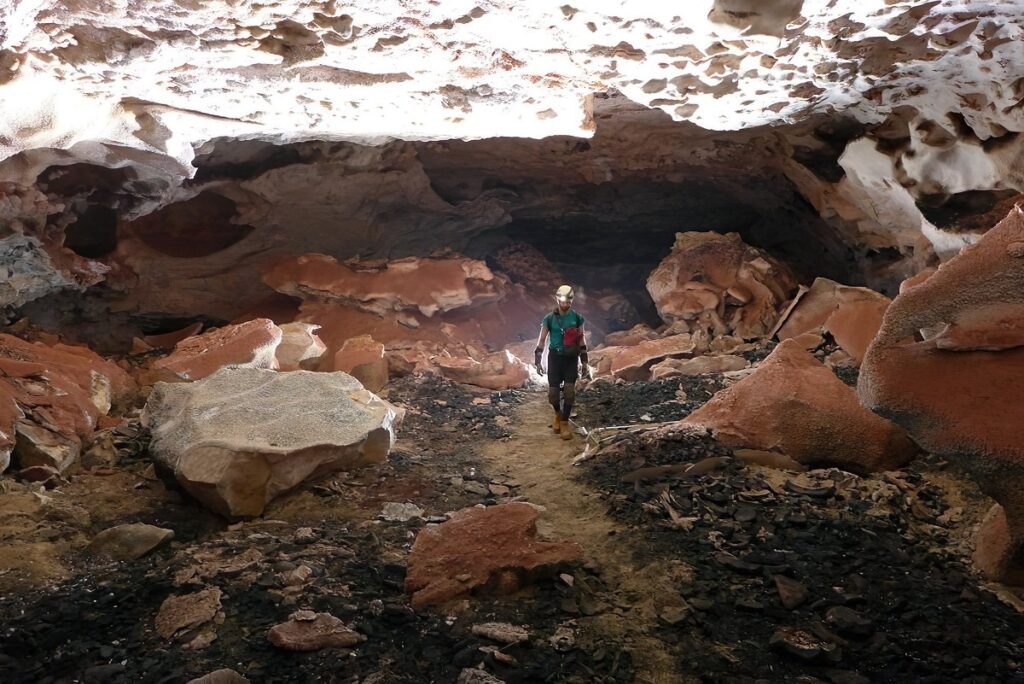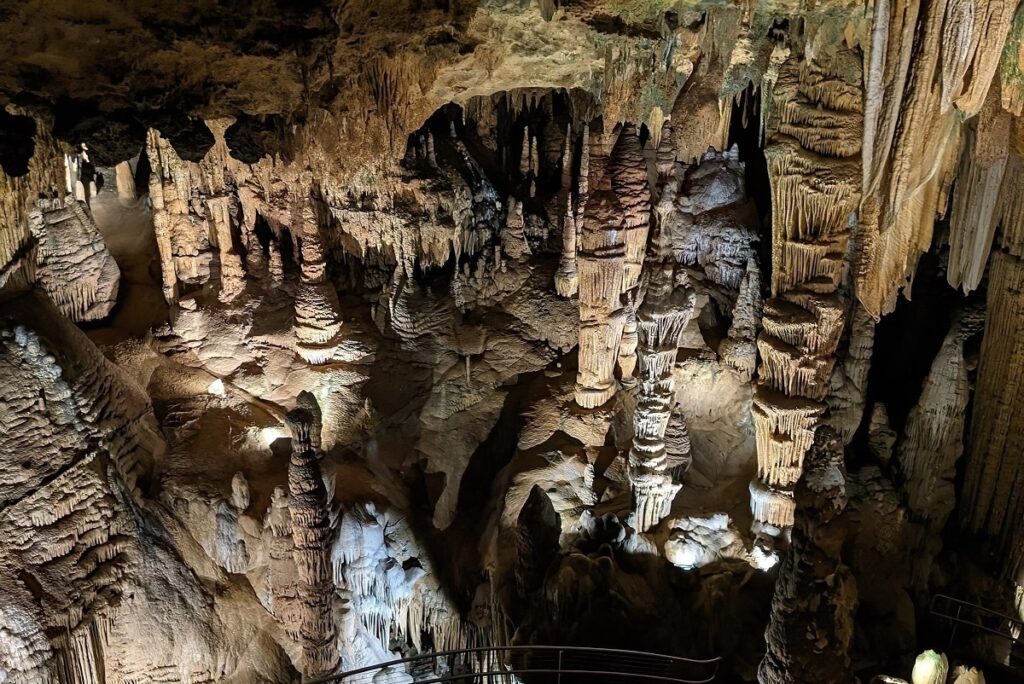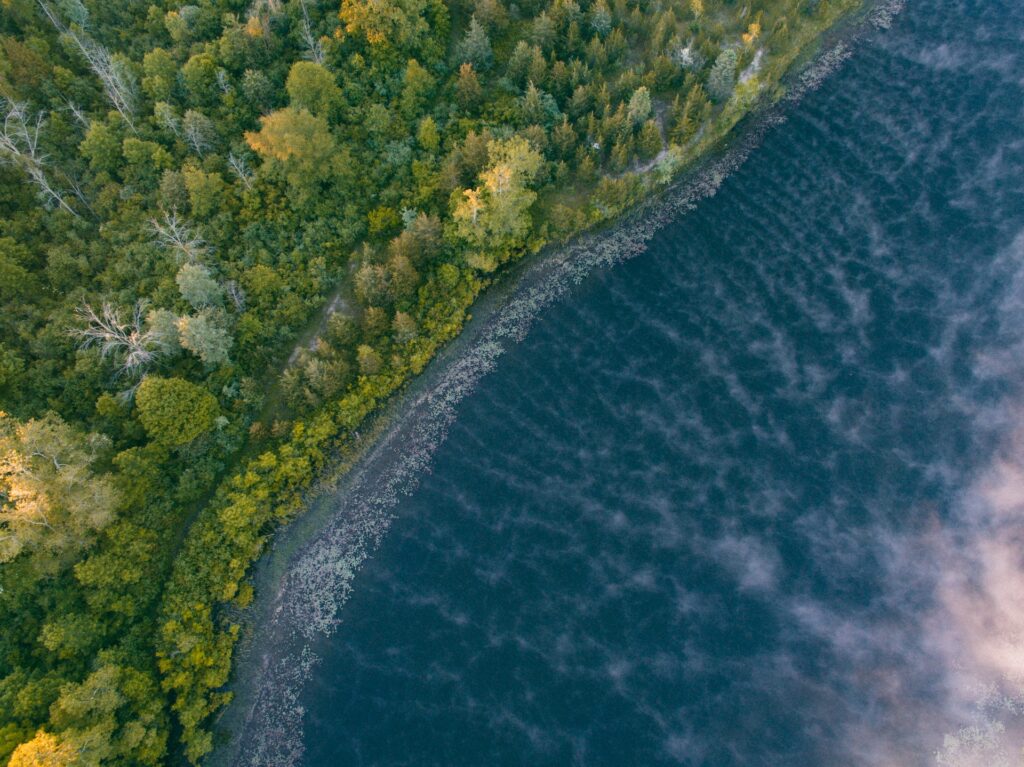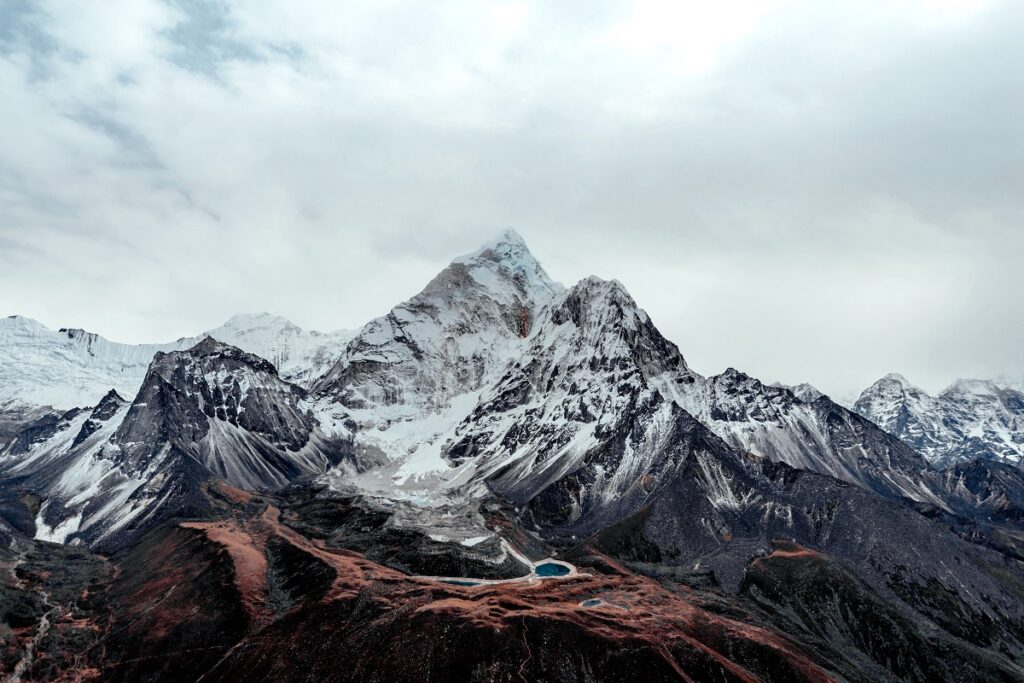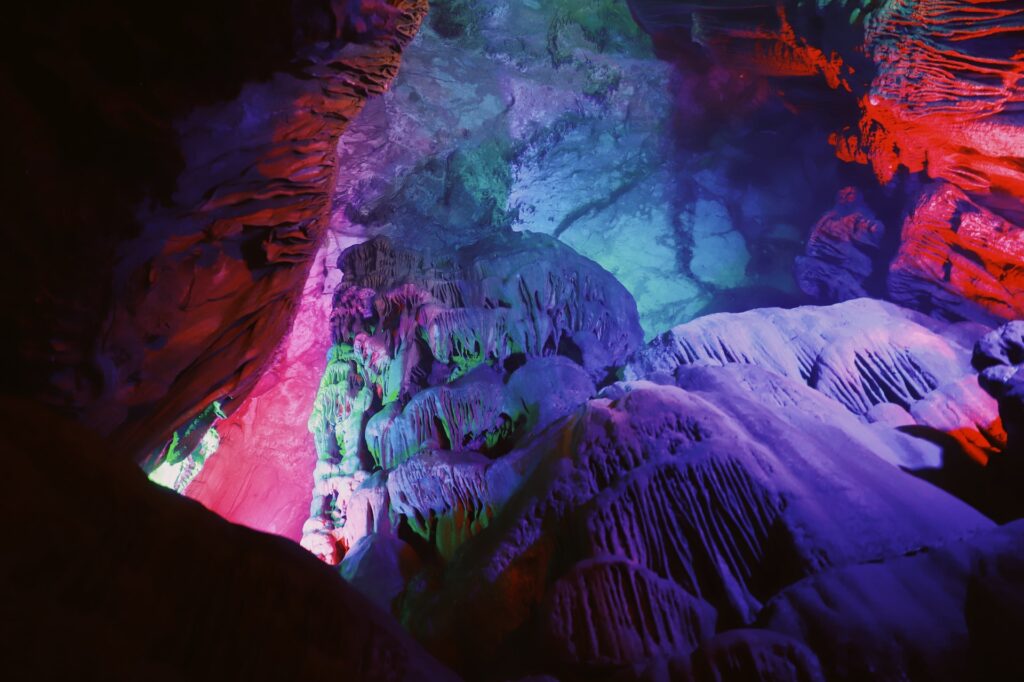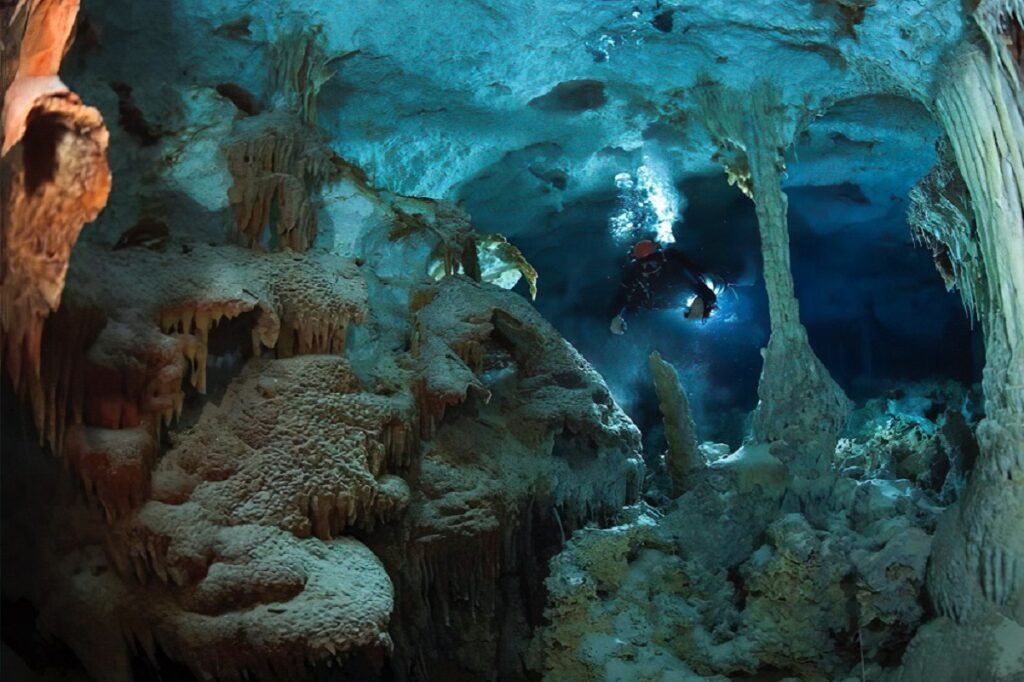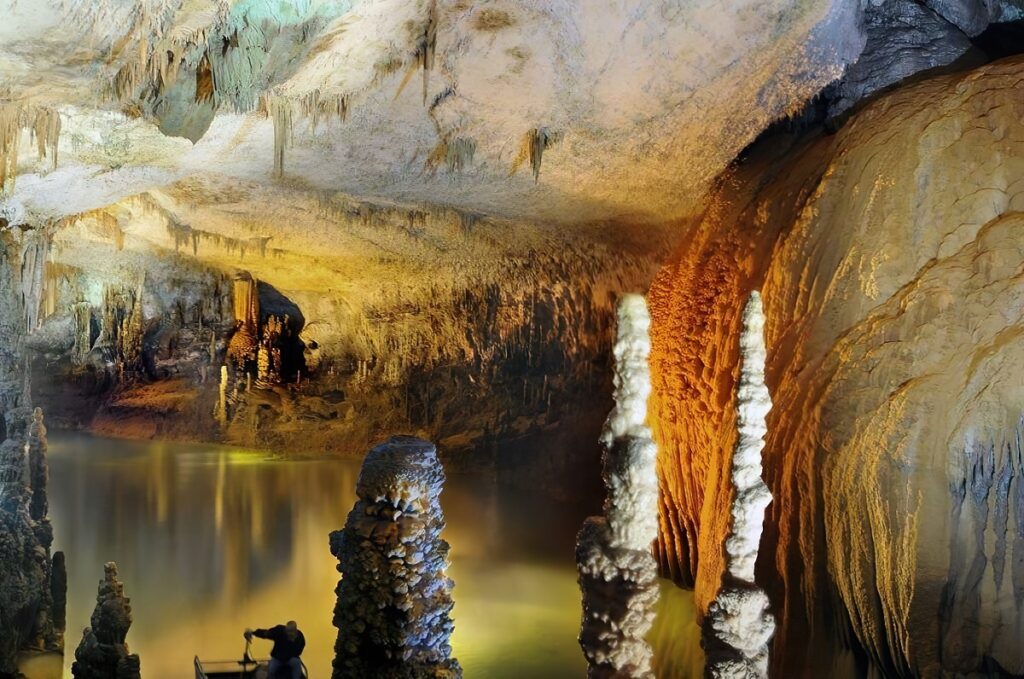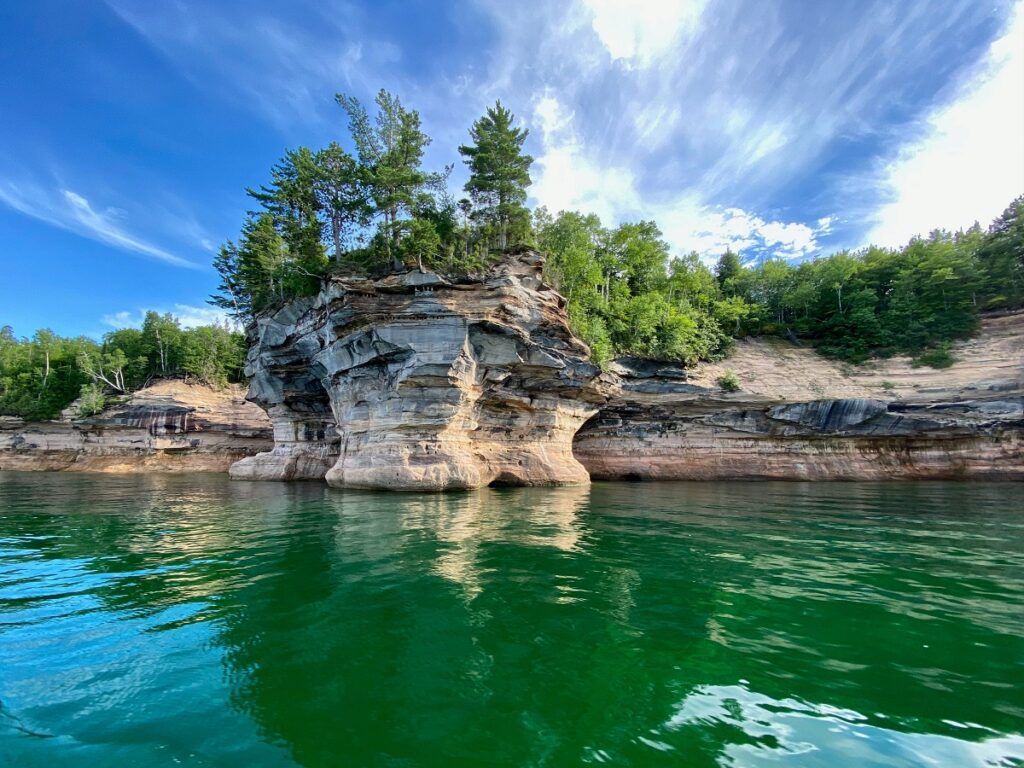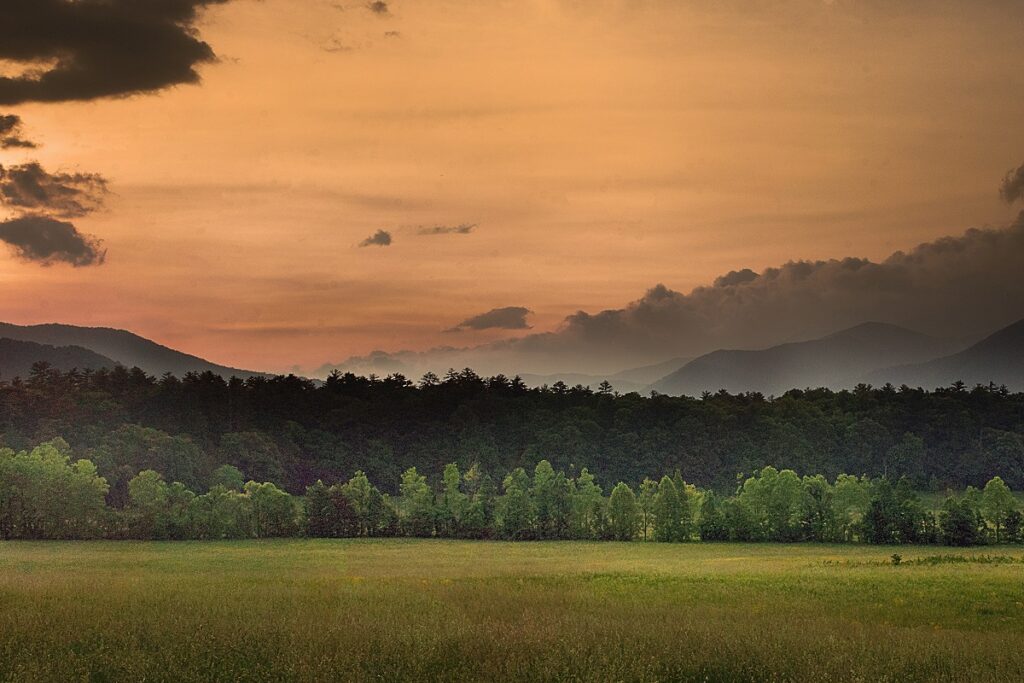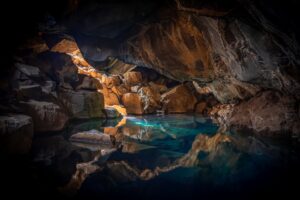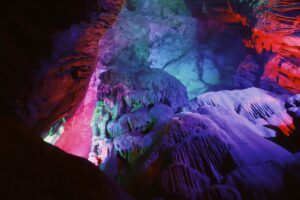Top 10 Largest Caves in the World
Top 10 Largest Caves in the World
WhiteClouds builds 3D Raised Relief Maps
Did you know we make
3D raised-relief maps
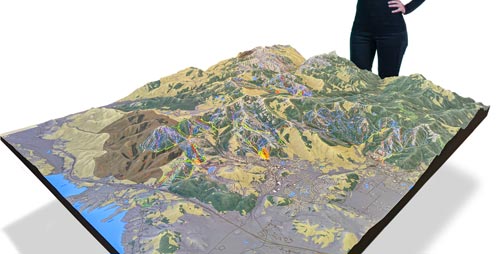
and
3D raised-relief maps
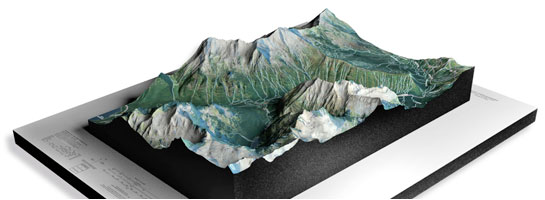
Caves are the Earth’s hidden kingdoms, sanctuaries of darkness and silence, realms of mystery and marvel that captivate our imaginations. Today, we delve into these subterranean wonders as we explore the top 10 largest caves in the world, each one a confirmation to the immense power and artistry of nature.
#1: Son Doong Cave, Vietnam (38.5 Million Cubic Meters of Volume)
In the heart of Vietnam’s Phong Nha-Ke Bang National Park, Son Doong Cave, the largest cave in the world, emerges like a fantastical scene from a Jules Verne novel. Discovered only recently in 2009 by a team of British cavers, led by Howard Limbert, Son Doong is a magnificent subterranean kingdom, a grand palace of nature that takes the breath away.
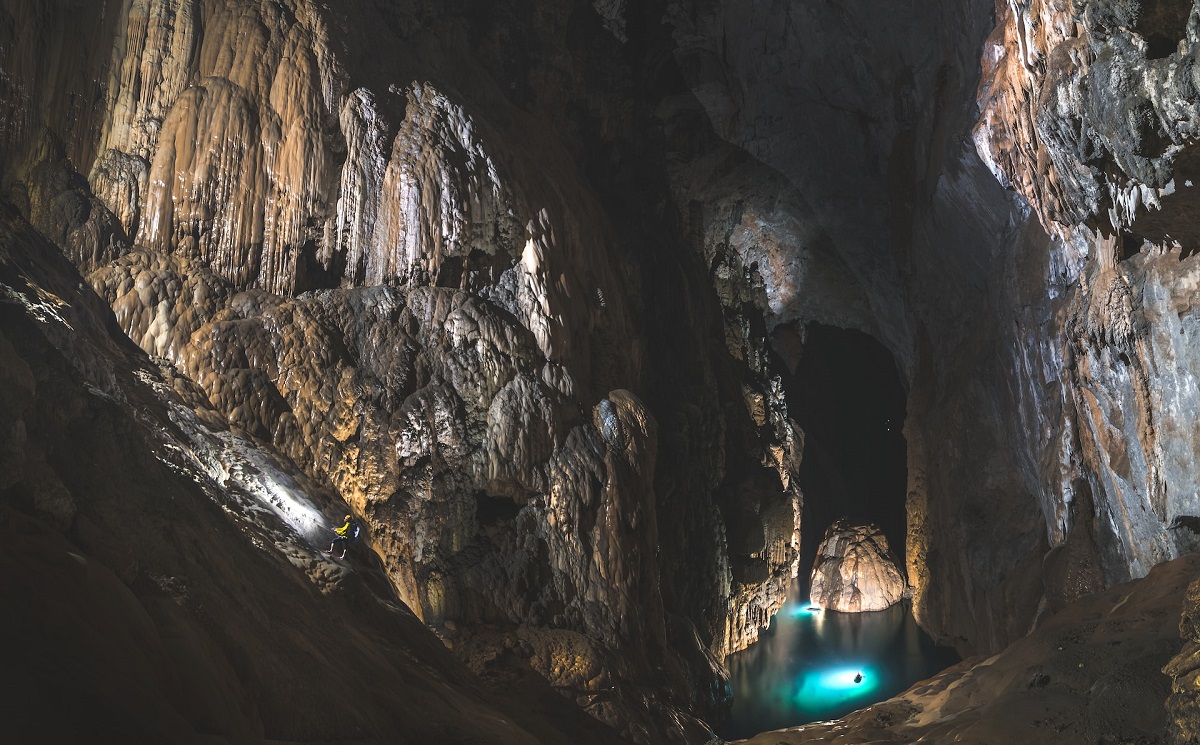
The sheer scale of Son Doong is staggering. It stretches over 5 kilometers long, with sections soaring up to 200 meters high and 150 meters wide. Its largest cavern is so immense that it could comfortably house an entire New York City block, skyscrapers and all. Yet, within this vast abyss of darkness and silence, there exists a thriving microcosm of life, a secret Eden untouched by time.
Stepping into Son Doong is like entering another world. A world where stalagmites rise like ancient stone sentinels, some reaching heights of up to 70 meters – the tallest ever known. Where a turquoise river runs, slicing through the cave, carving and shaping its majestic contours over millions of years.
But the true wonder of Son Doong lies in its unique ecosystem. Beneath its towering stone arches, in places where the ceiling has collapsed, allowing daylight to penetrate the darkness, there exists a flourishing jungle. Here, monkeys frolic, flying foxes swoop, and a diverse collection of flora thrives, a secret garden in the depths of the earth.
In the realm of Son Doong, each corner turned presents a fresh spectacle, from the ‘Hand of Dog’, a massive stalagmite formation resembling a dog’s paw, to the ethereal ‘Cactus Garden’, where ancient limestone karsts are cloaked in a lush array of ferns and moss.
Son Doong Cave is a testament to nature’s majesty and mystery. It is a magical, awe-inspiring destination that showcases the astounding marvels that lie beneath our world’s surface.
#2: Mammoth Cave, Kentucky, USA (676 Kilometers)
Nestled in the heart of Kentucky’s idyllic woodland, Mammoth Cave claims the title of the world’s longest cave system. With more than 400 miles of surveyed passageways, it is a labyrinthine wonder that invites explorers on a captivating journey into the heart of the earth.
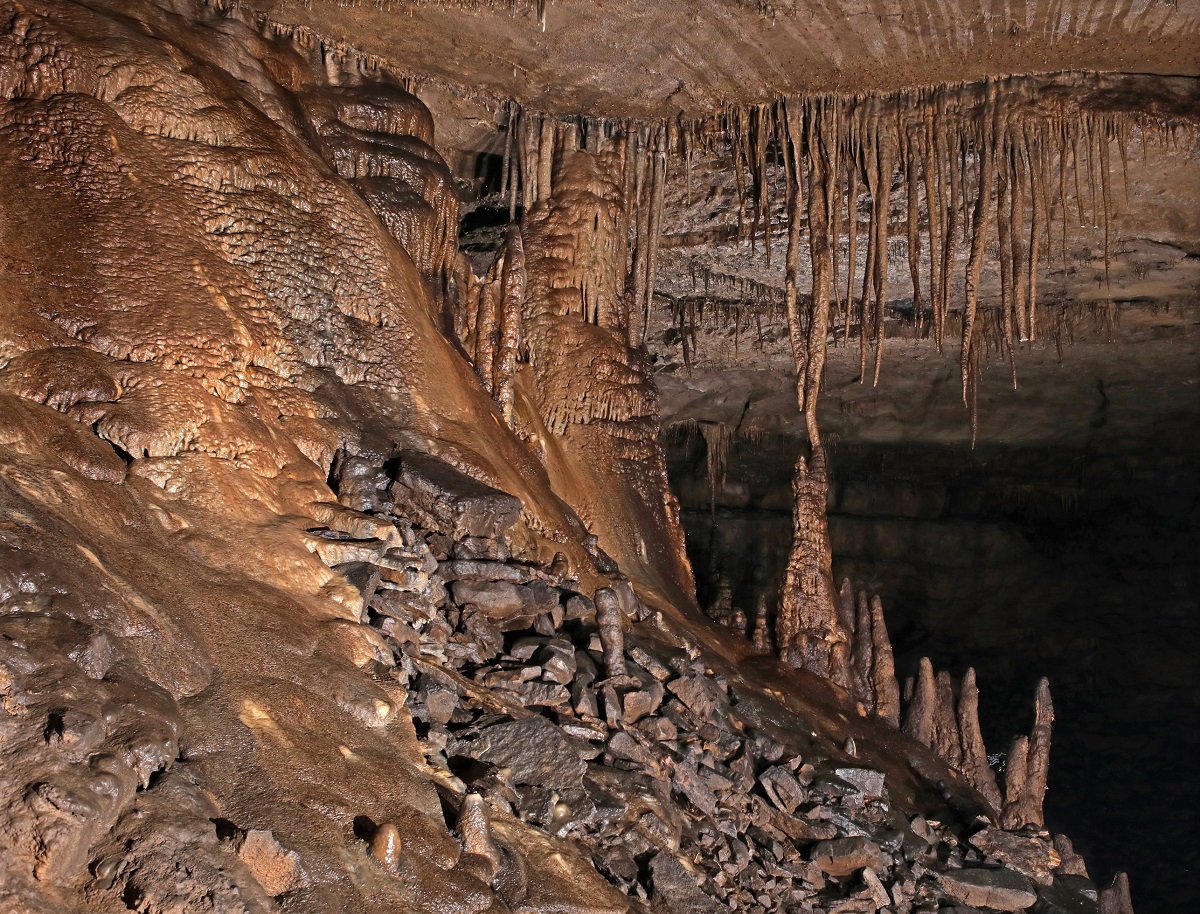
Walking into Mammoth Cave is like stepping into a subterranean cathedral. The grandeur of its caverns, the towering ceilings, and the astonishing variety of formations, from stalactites dripping from the ceiling to stalagmites reaching up from the floor, create an awe-inspiring spectacle. These are the echoes of the earth’s song, sung over millions of years, carved by water and time.
Discovered over 4,000 years ago by prehistoric Native Americans, Mammoth Cave holds not only natural wonders but also fascinating glimpses into human history. The cave’s historic tour allows visitors to walk in the footsteps of ancient people, exploring artifacts and drawings left behind centuries ago.
Yet, the thrill of Mammoth Cave lies not just in its history, but in the spirit of discovery that it fosters. Every year, explorers add more miles to its already extensive network of passages. There is always a new cavern waiting to be found, a fresh formation to admire.
As you journey through its vast networks of tunnels, you may encounter the aptly named ‘Bottomless Pit,’ or the haunting ‘Gothic Avenue,’ adorned with 19th-century signatures from cave explorers of the past. You might also witness a rare glimpse of the endangered Kentucky cave shrimp, a ghostly white creature that has evolved in the perpetual darkness.
Mammoth Cave is more than just a geological marvel; it is a timeless testament to the earth’s grandeur. Each visit reveals a new facet, a new story, a new adventure. This magnificent subterranean world, with its mesmerizing beauty and rich history, offers an unforgettable underground odyssey.
#3: Jewel Cave, South Dakota, USA (324 Kilometers)
In the beautiful Black Hills of South Dakota lies an underground spectacle that shines as brightly as its name suggests – Jewel Cave. Holding the title of the third-longest cave in the world, Jewel Cave stretches over an astonishing 200 miles, but its true splendor lies within the sparkling calcite crystals that adorn its walls, giving the cave its name and its magic.
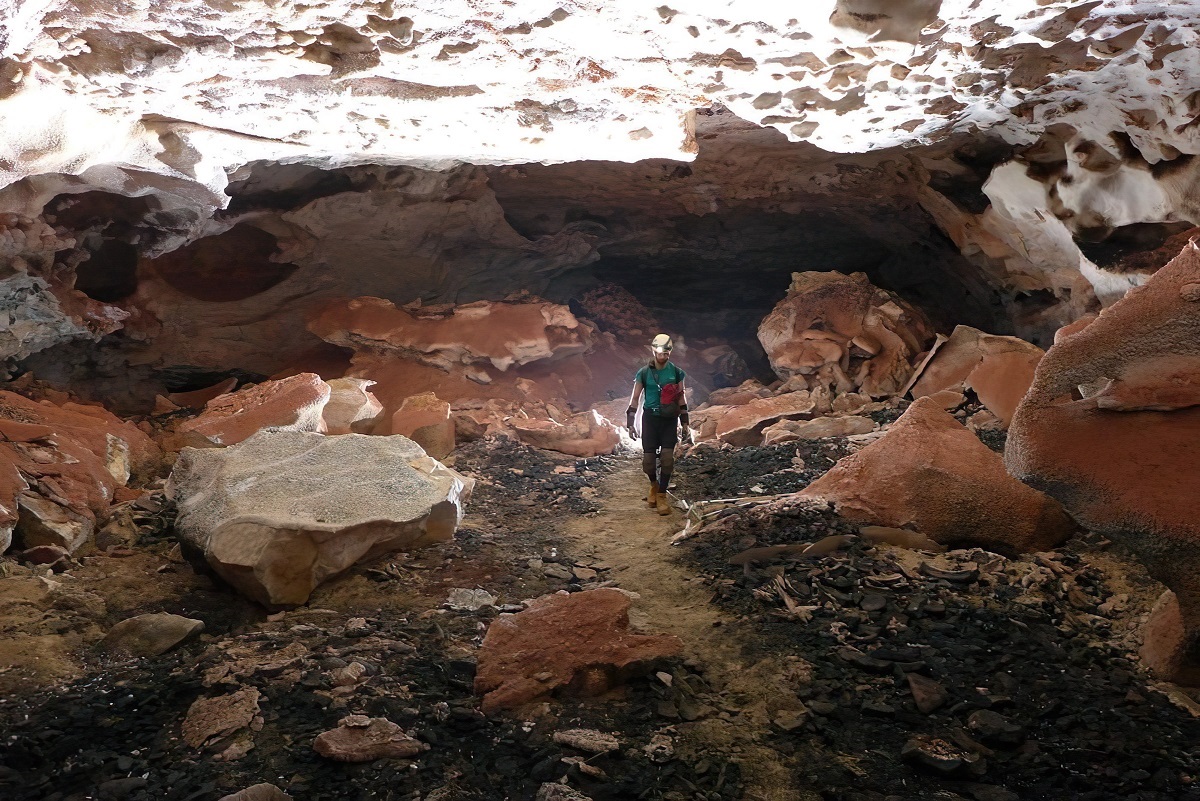
Every step inside Jewel Cave is a journey through a crystal labyrinth of captivating beauty. The cave is adorned with a dazzling array of calcite crystals known as “nailhead spar” and “dogtooth spar,” twinkling in the dim light and casting ethereal glimmers onto the cave’s walls. Imagine venturing through a star-studded sky, each star a tiny crystal winking in the darkness.
Discovered in 1900 by two prospectors, Frank and Albert Michaud, Jewel Cave was initially thought to be a small hole in the ground. However, the Michaud brothers found an opening and felt a blast of cold air, hinting at the immense size of the cave. Their discovery is now a landmark of American natural beauty.
Jewel Cave isn’t only about sightseeing; it’s also about thrilling adventure. Spelunking tours let visitors venture off the beaten path into the wild cave, climbing, and crawling through undeveloped sections. It’s a challenging and exhilarating way to experience the cave’s more hidden wonders.
One of the cave’s most breathtaking features is the “Draperies Room,” where sheets of calcite hang from the ceiling like intricate, mineral-rich curtains. Another sight to behold is the “Jungle Room,” named for its dense growth of frostwork and aragonite crystals, an otherworldly sight that evokes images of a subterranean winter wonderland.
Jewel Cave is indeed a precious gem in the realm of natural wonders. Its winding passageways and dazzling formations invite you to step into a world of mystique and beauty, a subterranean treasure waiting to reveal its secrets.
#4: Sistema Ox Bel Ha, Mexico (270 Kilometers)
Beneath the verdant jungles of the Yucatán Peninsula, Mexico, lies an unseen wonder – Sistema Ox Bel Ha, the longest explored underwater cave system in the world. Stretching over 270 kilometers, this incredible system of submerged passages and freshwater cenotes holds a world of intrigue and beauty beneath its surface.
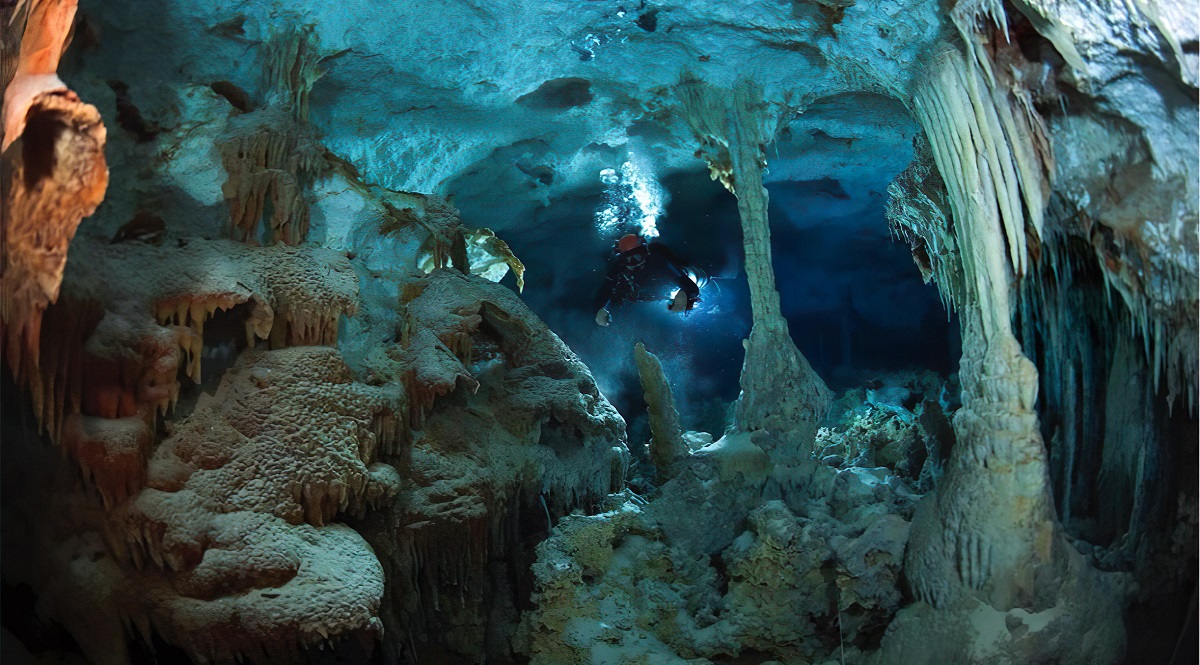
The name Ox Bel Ha translates from Mayan as “Three Paths of Water,” and indeed, the cave system offers divers a journey through an ethereal aquatic world. As you navigate the submerged labyrinth, you’ll encounter stalactites and stalagmites, grand chambers and narrow passageways, each one a testament to the enduring and transformative power of water.
One of the most stunning features of Sistema Ox Bel Ha is the halocline, where freshwater from the cenotes meets the denser saltwater from the sea. The resulting visual effect is akin to an underwater mirage, creating a surreal, dreamlike environment. It’s a sight that leaves even the most seasoned divers awe-struck.
The discovery of Sistema Ox Bel Ha in the late 20th century has unearthed a wealth of archaeological treasures, including Mayan pottery and human remains. This archaeological record gives us a glimpse into the ancient Mayan culture that held cenotes sacred, used them for ceremonies, and believed they were pathways to the underworld.
Moreover, the cave system is home to a unique and diverse ecosystem, from blind cavefish to unique bacteria that thrive in the total absence of light. Each organism has evolved and adapted to survive in this distinctive environment, making Ox Bel Ha a living laboratory for biologists and ecologists.
Sistema Ox Bel Ha invites those who dare to navigate its waters into an underwater realm of natural beauty, archaeological significance, and biological diversity. It’s an ethereal underwater world that captivates and fascinates, a hidden jewel beneath the Yucatán Peninsula that continues to reveal its secrets to those who venture into its depths.
#5: Optymistychna Cave, Ukraine (230 Kilometers)
Ukraine’s Ternopil region is home to an unassuming landscape above ground. But beneath the surface, it hosts a sprawling network of subterranean passages known as the Optymistychna Cave, the longest gypsum cave in the world. Stretching for a staggering 230 kilometers, it invites adventurers into its mesmerizing maze.
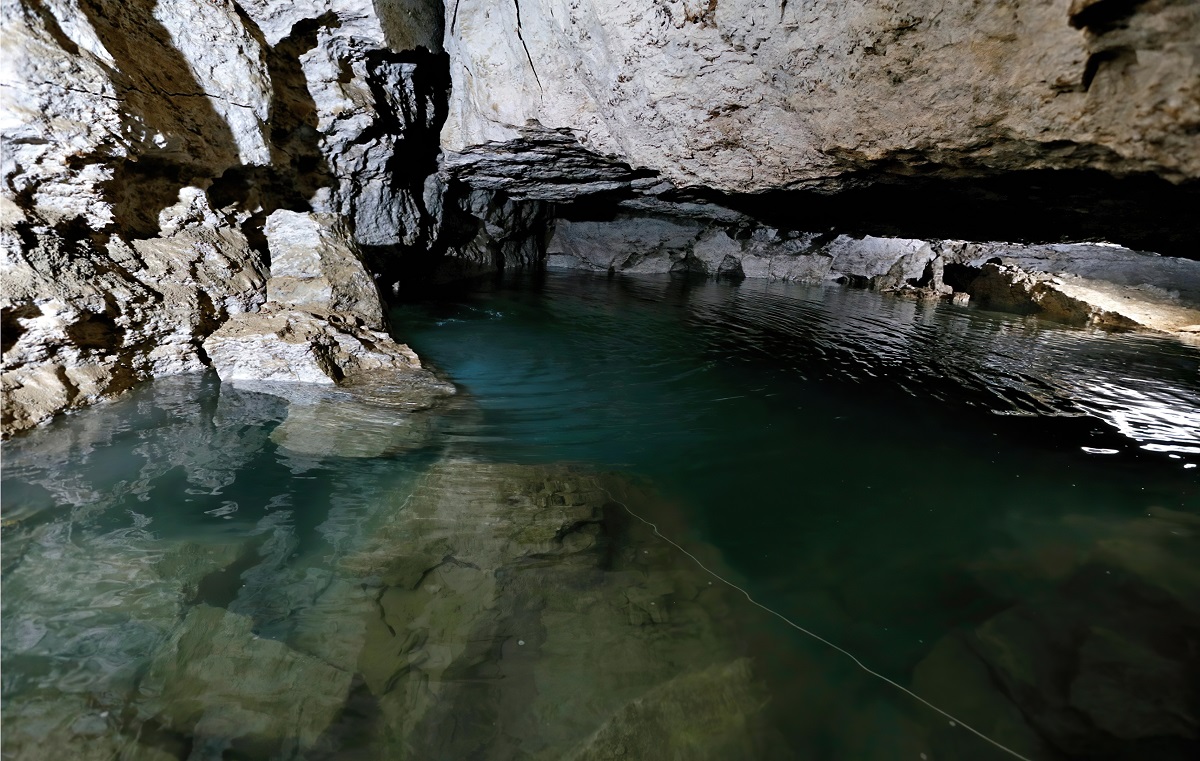
Exploring Optymistychna Cave is like journeying through a living, breathing piece of art. Over millennia, groundwater has etched away at the soluble gypsum bedrock, sculpting a magnificent array of tunnels, chambers, and galleries. The cave’s formations, including intricate gypsum crystals, give the appearance of frozen waterfalls, dramatic draperies, and delicate chandeliers.
One of the most astonishing features of Optymistychna is the plethora of archaeological and palaeontological treasures it houses. Ancient animal bones, including those of cave bears and cave hyenas, offer glimpses into the Ice Age’s fauna. Artifacts from the Paleolithic, Neolithic, Eneolithic, and Bronze Age provide an insight into the life of early humans, affirming the cave as a valuable historical archive.
The cave’s name, Optymistychna, translates to ‘Optimistic,’ and one cannot help but feel a sense of hope and exhilaration upon setting foot in this magnificent subterranean kingdom. The joy of exploring lies in the thrill of the unexpected. Each twist and turn within the labyrinthine cave might reveal a previously undiscovered passageway, a sparkling gypsum formation, or a hidden archaeological treasure.
However, the cave is not for the faint-hearted. Navigating the sprawling network of passages requires stamina, skill, and a sense of adventure. But for those who dare, the rewards are great. From its awe-inspiring natural formations to its precious archaeological treasures, Optymistychna Cave presents a unique and exciting journey into the depths of the earth.
Optymistychna Cave is a true testament to nature’s ability to inspire, surprise, and challenge us. It’s a veritable playground for the adventurous, an open book for the historically curious, and a mesmerizing masterpiece for those who appreciate natural beauty.
#6: Sistema Sac Actun, Mexico (230 Kilometers)
Deep beneath the lush green jungles of the Yucatán Peninsula in Mexico, lies an awe-inspiring aquatic labyrinth – Sistema Sac Actun. At over 230 kilometers long, it holds the title of being one of the world’s longest underwater cave systems, presenting a fascinating combination of natural wonder and archaeological significance.
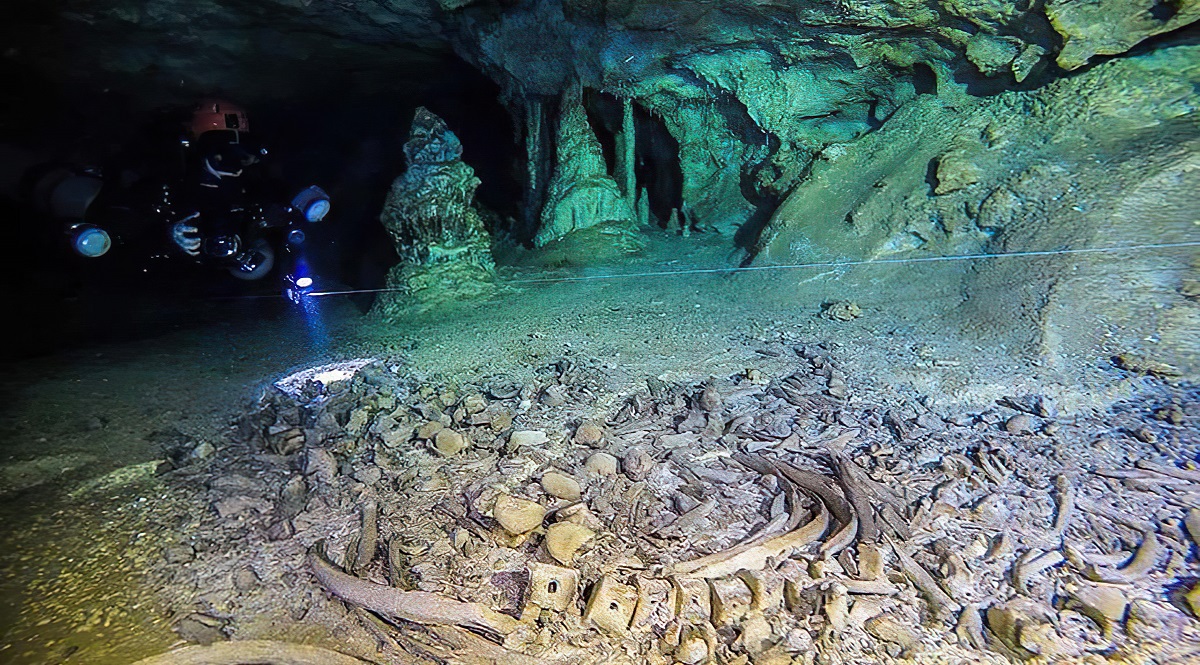
Sac Actun, translating to “White Cave” in the Mayan language, lives up to its name with its breathtaking underwater chambers adorned with crystalline stalactites and stalagmites. It’s a subterranean dream world where divers glide through clear turquoise waters, illuminating centuries-old rock formations that defy gravity and evoke a sense of timeless beauty.
One of the most intriguing aspects of Sistema Sac Actun is the halocline phenomenon. The unique mix of fresh and saltwater creates a surreal visual spectacle where the two waters meet, producing a swirling mirror effect that has left even the most experienced divers awestruck.
But it’s not just the natural splendor that sets Sac Actun apart; it’s the cave’s rich archaeological value that draws in explorers and researchers alike. The cave system is a treasure trove of ancient Mayan artifacts, extinct fauna, and human remains, including the oldest known skeleton found in the Americas, known as “Naia.” These findings provide invaluable insights into the region’s prehistoric life and climate.
Furthermore, Sac Actun is a biodiversity hotspot, home to a wide array of species, some of which are uniquely adapted to the cave environment. From blind cave fish to curious crustaceans, the cave is a testament to life’s adaptability.
Exploring Sistema Sac Actun is more than just a dive; it’s a journey through time, a chance to delve into an ancient world preserved beneath the jungle floor. With its mesmerizing geological formations, archaeological treasures, and rich biodiversity, Sac Actun remains one of the world’s most captivating underwater adventures, promising a thrilling exploration of the world beneath our feet.
#7: Wind Cave, South Dakota, USA (230 Kilometers)
Located in South Dakota’s Black Hills, Wind Cave captivates adventurers with its enchanting formations and over 140 miles of explored passages, making it one of the world’s most intricate cave systems. But the true magic of Wind Cave lies within the walls – it contains 95% of the world’s discovered boxwork, a rare and delicate cave formation that makes this subterranean wonderland unlike any other on Earth.
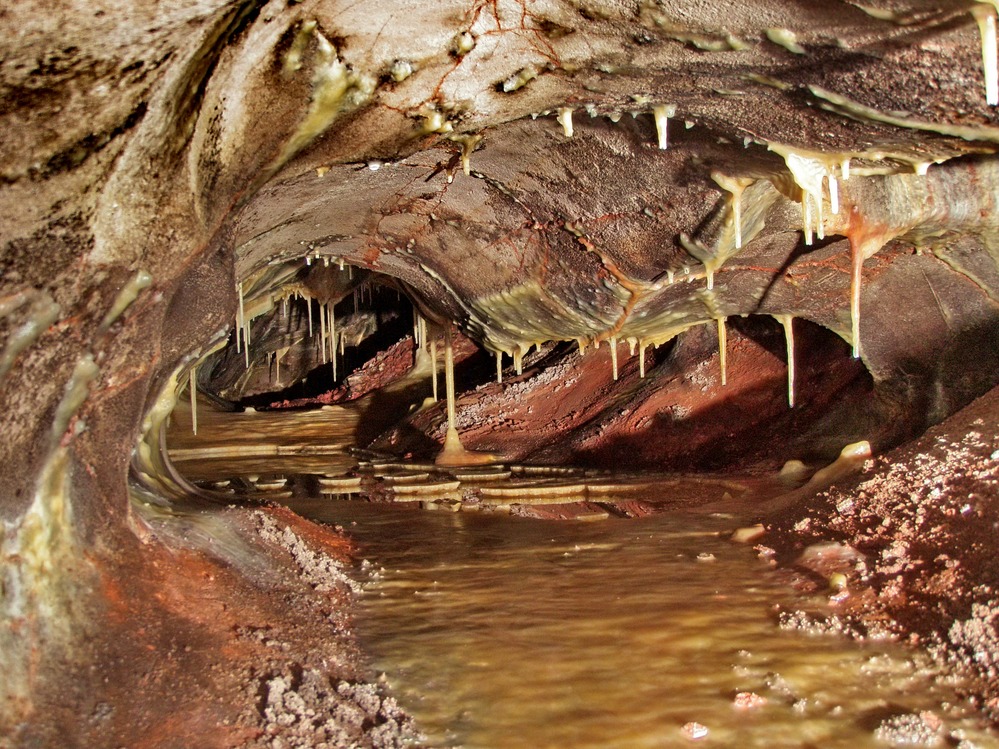
Upon entering Wind Cave, you are greeted by a spectacle of nature’s architectural brilliance. Networks of thin calcite fins crisscross each other to form an intricate honeycomb pattern that adorns the ceiling and walls – this is the famous boxwork, unique to Wind Cave. It’s as if you have walked into a gigantic geometric art installation meticulously crafted by Mother Nature.
Discovered in 1881 by brothers Jesse and Tom Bingham, Wind Cave is steeped in rich history and mystery. The brothers were drawn to the cave by a whistling noise, a phenomenon caused by the cave’s atmospheric pressure differences. They were the first to experience the cave’s eponymous winds, which can still be felt at the entrance on certain days.
Further exploration of the cave reveals more wonders, such as frostwork – delicate, needle-like growths that sparkle in the light, creating an ethereal environment that takes your breath away. You might also encounter the rare and elusive cave cricket, a creature that has perfectly adapted to life in this underground world.
One of the cave’s most stunning chambers is the “Fairgrounds,” a vast room filled with boxwork and popcorn formations, a testament to the cave’s geological diversity. Then, there’s the “Elks Room,” home to a historic graffiti from the 1890s, a fascinating glimpse into the cave’s early tourism history.
Visiting Wind Cave is not just an exploration; it’s an adventure through geological time and a testament to nature’s creativity. With every step, you’ll encounter breathtaking formations and historical remnants that narrate an awe-inspiring tale of the world beneath our feet. Wind Cave is indeed a mesmerizing gateway into the heart of the Earth.
#8: Lechuguilla Cave, New Mexico, USA (222 Kilometers)
Unseen beneath the rugged wilderness of New Mexico’s Carlsbad Caverns National Park, lies one of the world’s most awe-inspiring subterranean landscapes – Lechuguilla Cave. With over 138 miles of passages, it’s not just the size that impresses but also its breathtaking formations and the rare microbial life that offer unprecedented scientific insights.
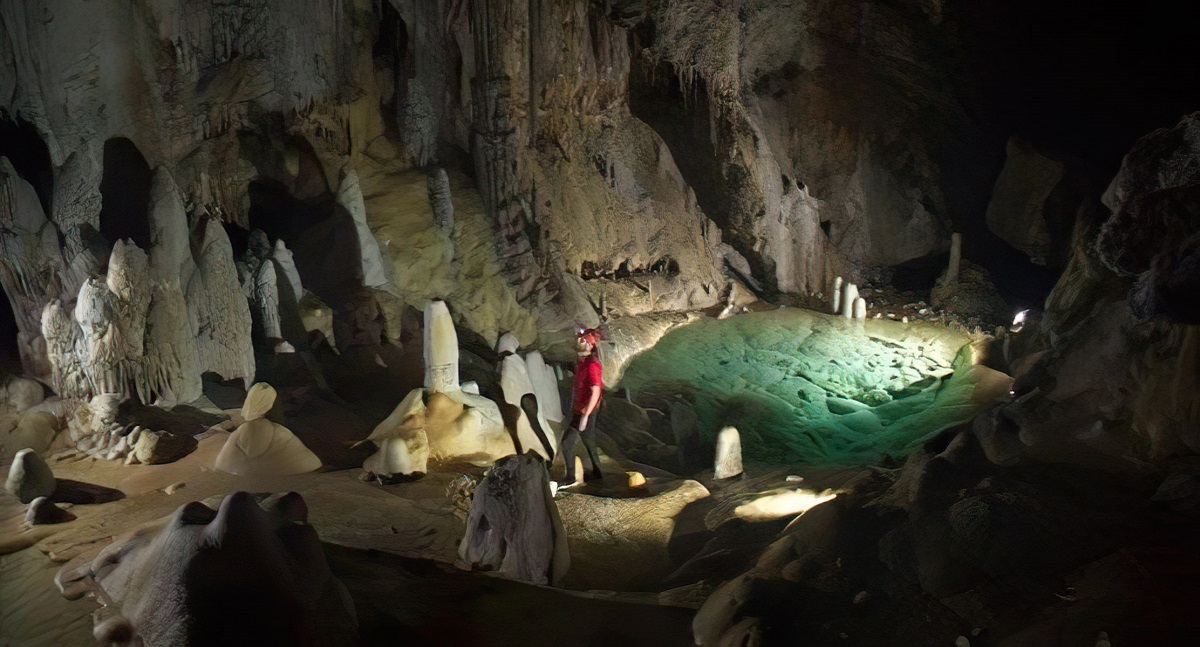
Lechuguilla is an underground fantasy world, home to some of the world’s most extraordinary geological formations. Towering gypsum chandeliers dangle from ceilings, delicate aragonite crystals shimmer in the lamplight, and enormous, centuries-old stalagmites rise from the cave floor, creating a surreal environment reminiscent of a science fiction novel.
The cave’s charm lies in its exquisite formations, many of which are not found elsewhere. For instance, the “Chandelier Ballroom” is a veritable palace of crystals, with gigantic chandeliers of gypsum hanging from the ceiling. Another iconic formation is the “Lake of Liquid Sky,” a pool of water so still and so clear that it perfectly mirrors the ceiling above, creating an illusion of infinite depth.
Lechuguilla Cave was known but not explored until 1986 due to its limited access via a narrow, uninviting entrance. The breakthrough came when a group of cavers felt a strong draft emanating from the cave’s entrance, hinting at larger passages below. They excavated, and what they discovered surpassed all expectations – the hidden expanse of Lechuguilla, a pristine and undisturbed underworld.
The cave is not just a spectacle of geological beauty; it’s also a scientific treasure trove. Bizarre microbial colonies, known as ‘snottites,’ live in the cave, surviving on sulfur, iron, and other chemicals. These communities help scientists understand extremophile organisms, offering clues about possible life forms on other planets.
A visit to Lechuguilla is an odyssey through an underworld of geological marvels, a journey that takes you through towering stone forests, glittering crystal chambers, and an ecosystem that challenges our understanding of life. It’s a testament to the unparalleled beauty that lies hidden beneath our feet, waiting to be discovered.
#9: Gua Air Jernih, Malaysia (215 Kilometers)
Nestled in the vibrant rainforests of Malaysia, the Gua Air Jernih, or Clearwater Cave, conceals an astonishing world of natural beauty beneath the surface. As part of the Gunung Mulu National Park, a UNESCO World Heritage site, the cave boasts over 215 kilometers of surveyed passages, making it one of the largest cave systems in the world.
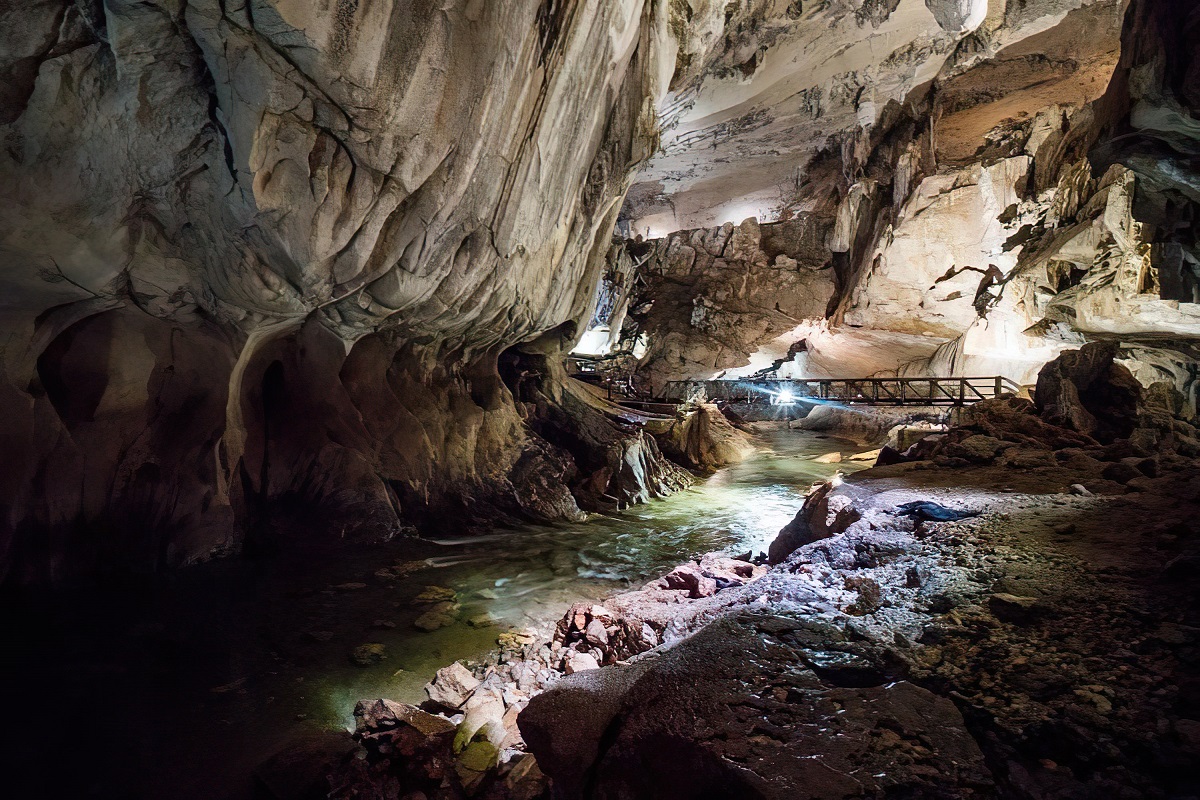
The Clearwater Cave, true to its name, houses a spectacular underground river of crystal-clear water, flowing through labyrinthine channels carved out by the relentless force of nature over millennia. As you traverse the cave, you’ll be captivated by the shimmering pools of water that reflect the stunning rock formations, creating a spectacle of mirrored illusions.
The journey to the cave itself is a testament to the adventure that lies ahead. The route involves a thrilling longboat ride up the Melinau River, followed by a hike through the lush rainforest before you reach the cave entrance. The echoing sounds of the jungle give way to the serenity of the cave, where the only sound is the soft murmuring of the underground river.
One of the cave’s most famous residents is the swiftlet, a bird known for its echolocation abilities. It navigates through the dark, complex passages of the cave, building its edible nests high on the cave walls. The spectacle of these birds returning to their nests at dusk is a sight to behold, a silent ballet that signifies the harmony of life within the cave.
Perhaps the most mesmerizing part of Clearwater Cave is the “Lady’s Cave,” where a stalagmite resembling the silhouette of a woman stands. Illuminated by the soft light filtering from above, it’s an eerie and beautiful sight that adds an element of mystique to the cave’s atmosphere.
A visit to the Gua Air Jernih is not just a cave exploration; it’s a journey through a living, breathing ecosystem that holds countless natural marvels. This fascinating subterranean landscape is a testament to the astounding beauty that lies hidden beneath the surface, waiting to awe those who dare to explore its depths.
#10: Lamprechtsofen, Austria (163 Kilometers)
Welcome to Lamprechtsofen, one of the largest cave systems in the world, nestled within the picturesque alpine landscapes of Austria. Encompassing over 163 kilometers of intricate subterranean passages, Lamprechtsofen is a geographical marvel that offers a unique, thrilling exploration for daring adventurers and scientists alike.
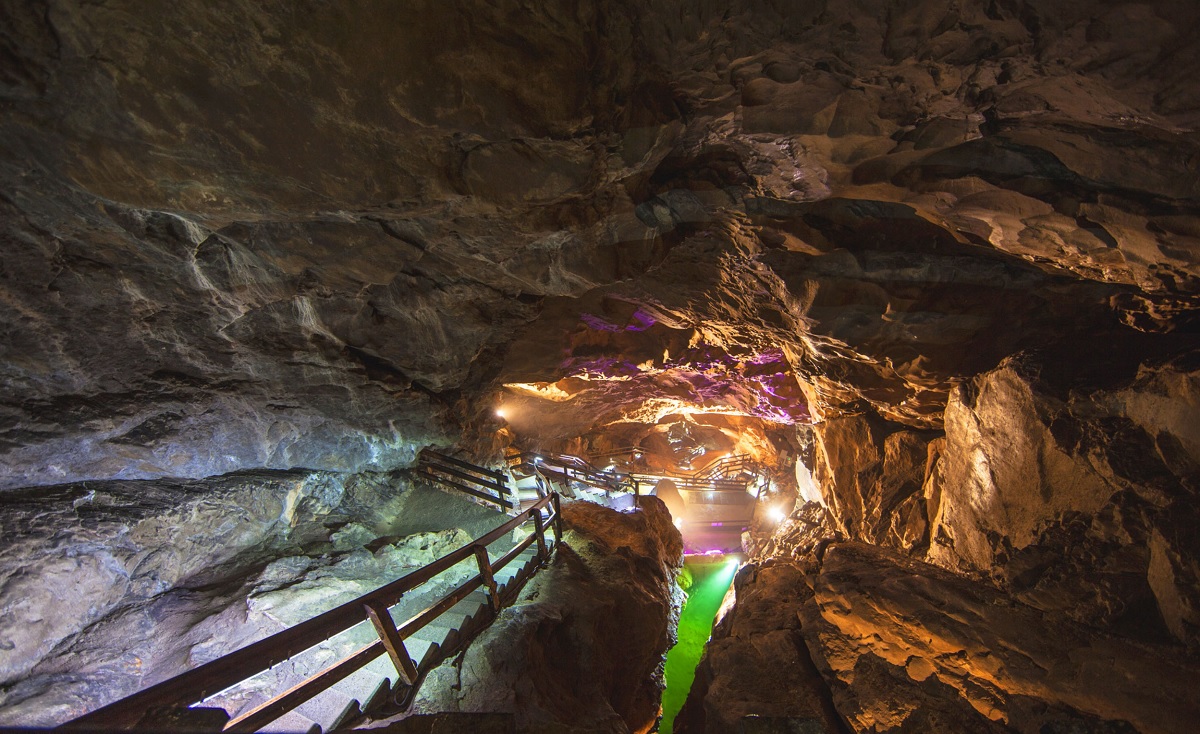
Lamprechtsofen, named after the knight Lamprecht, was once thought to be the lair where the knight hid his vast treasures. While the gold remains elusive, the true treasure of Lamprechtsofen is its striking natural beauty, mesmerizing visitors with its awe-inspiring stalactites, stalagmites, and otherworldly caverns.
An essential part of the Leogang Mountains, the cave was originally known to be two separate caves – Lamprechtshöhle and the PL2 system. However, a connection discovered in 1998 united them into one giant system, placing Lamprechtsofen firmly on the list of the world’s most extensive caves.
Journeying through Lamprechtsofen, you’ll encounter the Whispering Wind Hall, named after the eerily beautiful sounds that the wind makes when it weaves its way through the cavernous hall. Another highlight is the River Passage, a tunnel through which an underground river flows forcefully, evidence of the immense erosional power that has shaped the cave over millennia.
But Lamprechtsofen is more than just a stunning spectacle; it’s also a site of scientific interest. The cave is a living laboratory for geologists, biologists, and climatologists, its recesses providing valuable insights into Earth’s past climates, geological processes, and even unique cave-dwelling organisms.
Visiting Lamprechtsofen is not merely a sightseeing tour; it’s a thrilling journey into the depths of Earth’s interior. As you traverse through the echoing chambers and along the rushing underground river, you’ll find yourself captivated by the sheer grandeur of this hidden world beneath the Austrian Alps. Lamprechtsofen, with its impressive network of passages and breathtaking natural formations, truly is an underground frontier waiting to be explored.
More Great Top 10’s
Caves and Maps
A glimpse into the deep recesses of the earth, caves present a fascinating blend of history, geology, and biodiversity, making them intriguing subjects for exploration and study. Yet, this subterranean world can be perilous, filled with a labyrinth of passages, some of which stretch for miles. Understanding the spatial intricacies of caves is paramount for safe and successful exploration. Here is where maps come into play. The relationship between caves and maps is as profound as it is practical, offering a unique intersection of science, exploration, and cartography.
Mapping caves, or speleology, is a critical aspect of caving. It aids researchers and explorers in understanding the complex networks below the earth’s surface, helps guide rescue operations, informs conservation efforts, and contributes to our knowledge of earth’s history.
In essence, the relationship between caves and maps is an intricate dance between exploration and understanding. Cave maps not only guide us safely through the earth’s subterranean labyrinths but also help us understand these mysterious structures better, aiding scientific research, contributing to effective conservation, and enhancing the thrill of exploration.
Learn more about Maps
- Topographical Maps: Representation of the physical features of a region or area.
- Contour Maps: Representation of the contours of the land surface or ocean floor.
- Raised Relief Maps: Representation of land elevations with raised features indicating landforms.
- Terrain Maps: Representation of the physical features of a terrain or landmass.
- USGS Topographic Maps: Representation of topographic features and land elevations based on USGS data.
- USGS Historical Topographic Maps: Representation of historical topographic maps created by the USGS.
- Watershed Maps: Representation of the areas where water flows into a particular river or lake.
- Elevation Maps: Representation of land and water elevations with high precision.
- Physical Maps: Representation of physical features of the Earth’s surface such as landforms, oceans, and plateaus.
- Bathymetric Maps: Representation of the topography and features of the ocean floor.
- NOAA Maps: Representation of atmospheric, oceanographic, and environmental data by NOAA.
- Nautical Maps: Representation of the underwater features and depth of an area for navigation purposes.
- Geologic Maps: Representation of the geologic features of an area such as rock types, faults, and folds.
- Satellite Maps: Representation of earth from high-definition satellite imagery.
Contact us today to learn more about our services and how we can help you achieve your goals.
